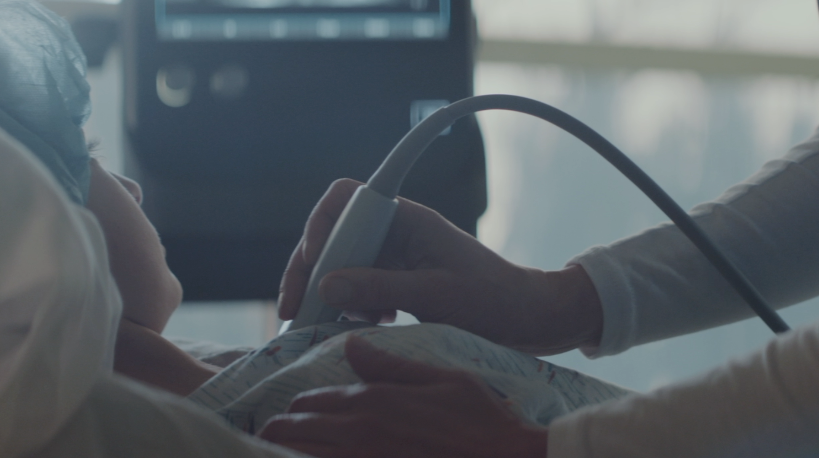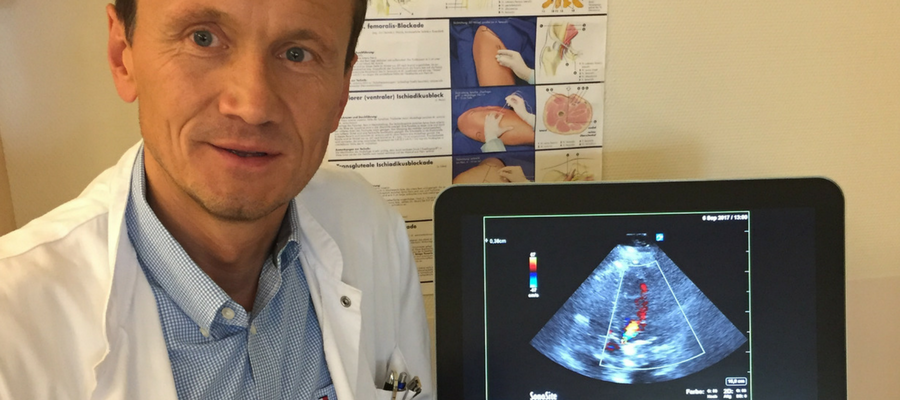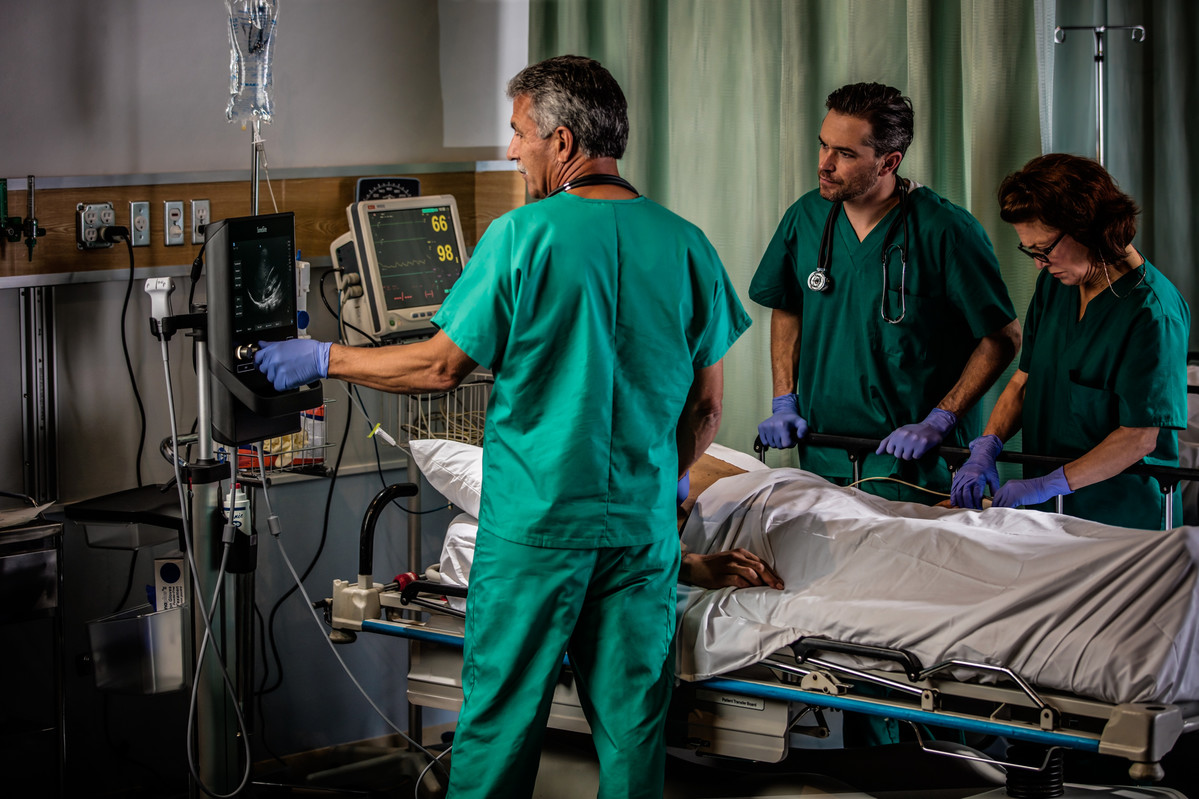Portable Ultrasound: Increasingly Common & Versatile

Point-of-care ultrasound is efficient. It is non-invasive. It is safe. And fortunately for everyone, it is becoming more and more ubiquitous.
Ultrasound: Increasingly Common & Versatile

Point-of-care ultrasound is efficient. It is non-invasive. It is safe. And fortunately for everyone, it is becoming more and more ubiquitous.
Hospital Continues Efforts to Reduce Opioid Over-Prescription
St. Joseph Regional Medical Centre in Paterson, New Jersey has been among the forefront of medical providers who are attempting to stem the U.S. opioid addiction epidemic where it often starts: the Emergency Department.
User Stories: Sports Medicine Clinic Physician Uses Sonosite Ultrasound

Dr. Adam Garnett, a sports and exercise medicine (SEM) consultant at the Jersey Sports Medicine Clinic, divides his time between treating rugby players suffering from acute trauma injuries and triathletes and runners with overuse injuries.
Sports and Exercise Medicine Benefits from the Use of Ultrasound

Point-of-care ultrasound is an essential tool for Dr. Mark Ridgewell, an early pioneer of sport and exercise medicine (SEM). Through the course of his career, Mark has worked with many amateur and professional sportsmen and women, beginning with rugby and including three years with England Cricket and eight years with the Wales football team.
Floating Doctors: Remembering a Foetal Ultrasound from Years Ago

by Dr. Ben LaBrot, founder of Floating Doctors
As of this writing, my wife is pregnant with our first child, and the novelty has long since worn off. After looking after so many other people’s pregnancies, it’s a novel experience to be on the other end of the ultrasound probe, as it were.
POCUS in Emergency Medicine: Dispatches from Iraqi Kurdistan

Medical imaging offers life-saving insights into patient health—and perhaps no other imaging modality is more versatile and mobile than point-of-care ultrasound.
In a fascinating dispatch from the Kurdish city of Duhok in northern Iraq, Dr. Christine Butts describes how point-of-care ultrasound is an indispensable tool for emergency physicians, especially when patients arrive unconscious and with no indication of an obvious malady.
What South Asian Physicians Say About Sonosite Ultrasound
POCUS in Pre-hospital Settings: Rotterdam, The Netherlands

Time is of the essence in an emergency situation, and may be the difference between life and death. Ambulance crews on the front line must decide rapidly whether or not a patient is suffering from a life-threatening condition requiring specialist treatment, and point-of-care ultrasound can provide vital guidance.
Sonosite Sells 100,000th Ultrasound System

FUJIFILM Sonosite is delighted to announce that we have recently sold our 100,000th system.
A Sonosite X-Porte, our premier kiosk ultrasound system, was delivered to a hospital in California in early October.
Cardiac Ultrasound: Echocardiography with Dr. Robert Arntfield

Point-of-Care Ultrasound and Echocardiography
Go from "zero to scan" with this 5-part video series from Sonosite and Dr. Robert Arntfield. Learn about Doppler Principles, TEE, Stroke Volume, TAPSE, RSVP and more.
Ultrasound Guidelines for Paediatric Vascular Access

More than five million central venous catheter (CVC) lines are placed in hospitals each year, making it one of the most common invasive emergency room procedures.
Innovative Scottish Programme Puts POCUS in Rural Ambulances

FUJIFILM Sonosite’s M-Turbo point-of-care (POC) ultrasound systems will soon be providing pre-hospital diagnostics across the Scottish Highlands as part of the innovative SatCare trial. This study aims to combine POC ultrasound and advanced communications to enable remote image interpretation and decision making for a range of time-critical conditions.
Spanish NGO Cirugía Solidaria Uses M-Turbo in Kenyan Health Mission

During the Summer of 2017, a group of healthcare professionals – the majority from the Hospital Clínico Universitario Virgen de la Arrixaca (HCUVA) in Murcia, Spain – travelled to Kenya in partnership with the Spanish NGO Cirugía Solidaria.
They brought along surgical equipment – from beds to lamps to scalpels – to create a first-rate hospital set-up, most of which was donated by HCUVA.
POCUS Support for Professional Spanish Athletes

Point-of-care ultrasound (POCUS) is an essential everyday tool in sports medicine at the Clinica Ivre in Valencia, Spain.
Sonosite iViz on the Race Across America

The Race Across America is billed as the world’s toughest bicycle race; a non-stop, coast-to-coast, transcontinental trek from Oceanside, California to Annapolis, Maryland.
9 Reasons Ultrasound is Invaluable for Nephrologists

Point-of-care ultrasound is fast becoming a key instrumental technique in nephrology , supporting diagnostics and improving delivery of renal replacement therapy and subsequent vascular monitoring.
What Differentiates Sonosite from the Rest?
What differentiates FUJIFILM Sonosite?
Sonosite was founded with a mission to provide ultrasound machines that were tough and portable enough to withstand the chaos of battlefield hospitals. However, our interest in providing useful medical solutions did not end with the military; instead, it grew over time. Sonosite began to see the potential for portable ultrasound to improve patient outcomes in almost any medical setting.



